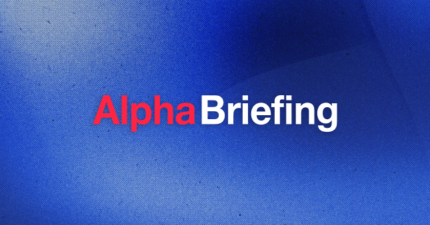Perpetual Futures: How They Work & Pros and Cons
Imagine a financial instrument that blends the flexibility of spot trading with the leverage of futures, but without the constraints of an expiry date.
That’s what perpetual futures offer.
They allow for high leverage and efficient price discovery. And unlike traditional futures, they don’t expire, offering continuous, seamless trading opportunities.
The downside of perpetual futures is managing the associated risks can be hard, such as market volatility and funding rate fluctuations. Their complexity and perpetual nature can be daunting, leading to hesitation in their adoption.
The challenge lies in understanding these complex instruments and how they can fit into your investment strategy.
Below, we’ll examine perpetual futures for experienced investors looking to trade crypto, explore what they are, how they work, and their pros and cons.
What Are Perpetual Futures?
Perpetual futures are a type of derivative contract that allows you to speculate on the future price of an underlying asset, such as cryptocurrency. You don’t need to own it, and there’s no expiration date.
Perpetual futures also offer the flexibility of going long or short, providing opportunities in both rising and falling markets.
This versatility makes them an attractive tool for sophisticated investors looking to hedge other investments or speculate on price movements. In fact, the median total daily trading volume of perpetual futures across all exchanges was 101.9 billion in 2022.
Perpetual Futures vs. Dated Futures
The table below outlines the main differences between perpetual futures and traditional dated futures.
| Perpetual Futures | Traditional Futures Contracts |
|
|
|
|
|
|
|
|
Perpetual futures are a novel financial instrument in which the market price regularly aligns with the underlying crypto asset‘s spot price, mainly through the funding rate.
As opposed to traditional futures, there’s no need to roll over contracts due to expiration, which can result in cost savings and less hassle for you. These perpetual contracts are often traded on cryptocurrency exchanges, enabling you to leverage your positions to potentially increase returns. However, as with all forms of leverage, there are more risks.
How Do Perpetual Future Contracts Work?
Unlike traditional futures, these contracts have no expiration date, allowing you to hold a long or short position indefinitely as long as the maintenance margin is met.
Here’s how they work:
- Initial margin: To open a position, you provide a fraction of the total value, known as the initial margin. This use of leverage allows for greater exposure with less capital.
- Maintenance margin: You must maintain a minimum balance in your account to keep open positions. If the balance falls below this, you’ll receive a margin call, and positions may face liquidation to cover losses.
- Funding rate: This ensures the perpetual contract’s price tracks the underlying spot price closely. Depending on market conditions, you’ll either pay or receive payments, which occur at set intervals.
- Liquidation: If the market moves against your position and the maintenance margin isn’t met, the trading platform may automatically close your position at the current market price to prevent further losses.
- Buyers and sellers: You’re a buyer if you bet the price will rise (long position) and a seller if you expect a drop (short position). You’re matched with counterparties through the platform.
You need to realize that due to their structure, perpetual swaps can be riskier than traditional futures, primarily due to market volatility and the leveraged positions involved.
If you’re considering perpetual futures trading, be sure to understand how these derivative contracts operate in the context of the broader financial markets, including cryptocurrencies.
Primary Characteristics of Perpetual Futures
No Expiry Date
Unlike regular futures, perpetual futures don’t have an expiry date. This means you can hold a position for as long as you need without worrying about the contract expiring. This is the main distinction between perpetual and traditional futures, allowing traders to speculate on the future price of an asset indefinitely.
Funding Rate Mechanism
This feature ensures the contract’s price aligns with the underlying asset‘s spot price. The funding rate can be positive or negative, and it periodically adjusts based on market conditions. It serves as an incentive or deterrent for traders to hold positions, influencing cash flow on the platform.
High Leverage
This means that with a smaller amount of capital (your margin), you can control a much larger position in the market. This can amplify gains, but you need to understand that it also increases the potential for higher losses. Managing the associated risk is critical.
Mark-to-Market Settlement
This process involves the daily (or even hourly) settlement of profits and losses, adjusting your margin balance in real time. If the market moves against your position and your capital falls below the maintenance margin, you may face a margin call to top up your balance.
Margin Requirements
Trading perpetual futures involves two types of margin: initial and maintenance. The initial margin is what you must deposit to open a position, while the maintenance margin is the minimum amount you need to keep in your account to prevent a margin call. These requirements are crucial for effective risk management in volatile markets.
Pros and Cons of Perpetual Futures
Before you start trading perpetual futures, you should understand both the potential advantages and the risks that come with this financial instrument.
Here, we’ll break down the key pros and cons you should consider.
Pros
- Increased liquidity: The market for perpetual futures tends to offer greater liquidity, meaning you can quickly enter or exit positions without causing significant price fluctuations. Crypto liquidity providers can help ensure these markets run smoothly.
- Flexibility: These contracts provide continuous trading without the need for rollover, allowing you to be agile in your trading strategies.
- Potential for higher returns: Perpetual futures can amplify your gains through leverage; but this also increases risk.
Cons
- High leverage risks: While leverage can enhance returns, it can also lead to substantial losses if the market moves against your position.
- Price volatility: The price of the underlying asset can be highly volatile, making perpetual futures a risky proposition if you’re not used to such fluctuations.
- Complexity for new traders: The mechanisms, such as funding rates and margin requirements, can be complex for newcomers, requiring a steep learning curve. They’re typically not suitable for beginners.
As mentioned, you need to do your due diligence when trading perpetual futures. Ensure you’re well-educated on both the benefits and the risks associated with these contracts.
See How AlphaPoint Can Power Your Trading Success
With an AlphaPoint powered exchange, you’re not just offering end users’ trading platform; you’re setting the standard for what digital asset and crypto trading should be — intuitive, fast, and secure.
Designed to be intuitive, AlphaPoint’s digital asset exchange software enhances your end users’ trading experience through highly customizable features that align with your operation’s specific objectives. As an operator, you benefit from real-time data and analytics, allowing for informed decisions in a fast-paced market environment.
Request a demo today and see how the technology works in sync with your trading goals.


